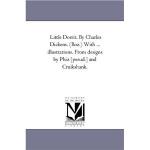|
This section contains 8,973 words (approx. 30 pages at 300 words per page) |

|
SOURCE: Metz, Nancy Aycock. “Little Dorrit's London: Babylon Revisited.” Victorian Studies 33, no. 3 (spring 1990): 465-86.
In the following essay, Metz discusses Dickens's use of images of the city of London in Little Dorrit.
We usually think of urbanization as a process associated with growth, expansion, construction, and burgeoning population. More vividly than any other Victorian novelist, Dickens has chronicled such changes. But as the rate of urban expansion increased toward the middle of the century, Dickens increasingly turned his attention to the unevenness of these transformations and to the psychological effect on city-dwellers as the metropolis changed shape and purpose. I see Little Dorrit (1855-57) as an important statement of these concerns, and the London it represents as central to the novel's exploration of human memory, imagination, and identity as they are distinctively shaped by the city experience.
Little Dorrit's London differs in important respects from its...
|
This section contains 8,973 words (approx. 30 pages at 300 words per page) |

|


